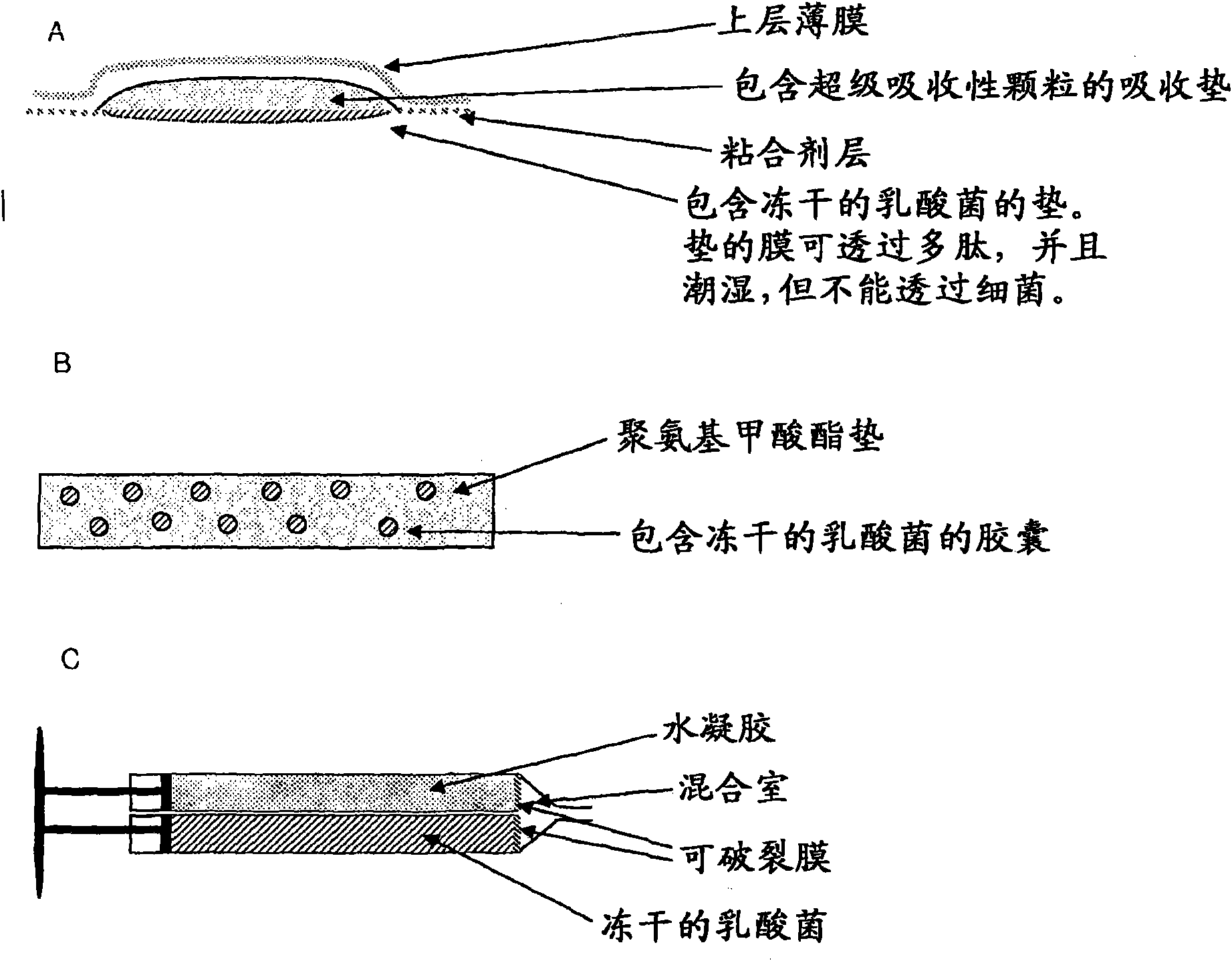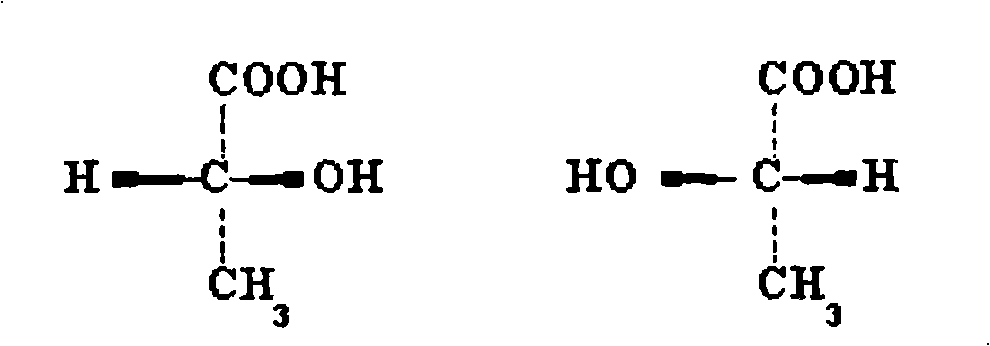Wound or tissue dressing comprising lactic acid bacteria
A technology of lactic acid bacteria and wounds, applied in bandages, absorbent pads, medical science, etc.
- Summary
- Abstract
- Description
- Claims
- Application Information
AI Technical Summary
Problems solved by technology
Method used
Image
Examples
Embodiment 1
[0205] Resuspend the lyophilized Lactobacillus GG in saline to a final concentration of 10 9 / ml. Knead the gelatin sponge (2×2cm) in 0.8ml Lactobacillus suspension or 0.8ml saline, and transfer it to Staphylococcus aureus, Psuedomonas aeruginosa or Coli Escherichia coli culture was plated on a 100 μl LB plate diluted by 1 / 10. Incubate the plate at 37°C. After 3 days, a growth inhibition (clear) zone was seen around the gelatin sponge kneaded with the Lactobacillus suspension, but not around the sponge kneaded with saline.
Embodiment 2
[0207] In a dual-compartment syringe, one compartment is filled with 10 ml of hydrogel, sealed and then autoclaved. After the sterilization process, fill the other compartment with appropriate low-humidity exhibitants (carboxymethyl cellulose and maltodextrin) and prebiotics (trehalose). 10 Lyophilized lactic acid bacteria. Grow a culture of Staphylococcus aureus, Pseudomonas aeruginosa or Escherichia coli to exponential growth and take 100ul of the culture to plate on the LB plate, at this time the culture reaches an OD of 0.5 600 . Holes are formed in the agar plate and the holes are filled with blank hydrogel or hydrogel containing lactic acid bacteria using a double-compartment syringe. Incubate the plate at 37°C. After 3 days, areas of growth inhibition (clarification) were seen around the pores of the Lactobacillus-containing hydrogel. No inhibition zone was seen around the pores containing smooth hydrogel.
Embodiment 3
[0209] Resuspend the lyophilized Lactobacillus GG in saline to a final concentration of 10 9 / ml, and fill 1ml of this suspension into a dialysis tube, where the molecular weight cut-off value is 300kDa, so that molecules up to 300kDa can pass through, but bacteria are retained in the tube. Add 1ml of saline to the other tube. Place these tubes on LB plates plated with 1 / 10 diluted 100ul on the culture of Staphylococcus aureus, Pseudomonas aeruginosa or Escherichia coli beforehand. Incubate the plate at 37°C. After 3 days, a growth inhibition (clear) zone was visible around the tube containing the Lactobacillus suspension, but not around the tube containing the saline.
PUM
| Property | Measurement | Unit |
|---|---|---|
| molecular weight | aaaaa | aaaaa |
| thickness | aaaaa | aaaaa |
Abstract
Description
Claims
Application Information
 Login to View More
Login to View More - R&D
- Intellectual Property
- Life Sciences
- Materials
- Tech Scout
- Unparalleled Data Quality
- Higher Quality Content
- 60% Fewer Hallucinations
Browse by: Latest US Patents, China's latest patents, Technical Efficacy Thesaurus, Application Domain, Technology Topic, Popular Technical Reports.
© 2025 PatSnap. All rights reserved.Legal|Privacy policy|Modern Slavery Act Transparency Statement|Sitemap|About US| Contact US: help@patsnap.com


